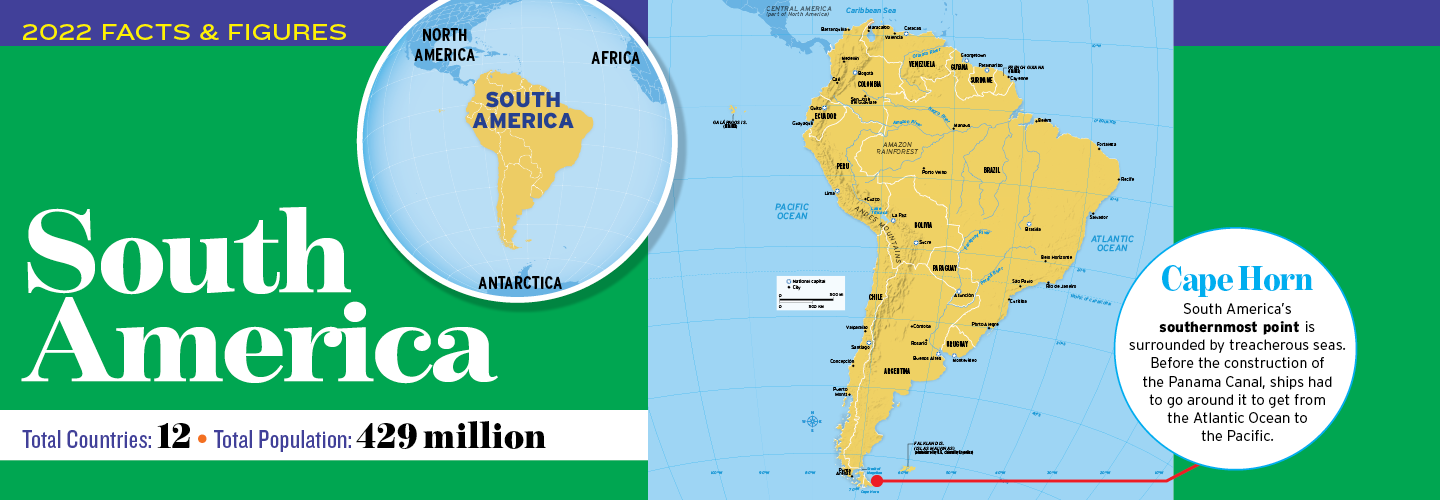LENGTH IN MILES of Chile’s Pacific coastline, which is home to penguins, pelicans, and sea lions. The country is only about 61 miles wide.

Mapping Specialists/Jim McMahon
2022 Facts & Figures: SOUTH AMERICA
TOTAL COUNTRIES: 12
TOTAL POPULATION: 429 million
iStockPhoto/Getty Images (Penguin); Sebastian Jakimczuk/Shutterstock.com (Pelican); Pierre-Yves Babelon/Getty Images (Sea Lions)
LENGTH IN MILES of Chile’s Pacific coastline, which is home to penguins, pelicans, and sea lions. The country is only about 61 miles wide.
Amazon Rainforest
Mark Fox/Getty Images
Stretching across some 2.6 million square miles, the Amazon rainforest covers about 40 percent of South America. It includes more than 4,000 miles of winding rivers and about one-tenth of all known animal species on the planet.
Source: World Wildlife Fund
Schneyder Mendoza/AFP via Getty Images
Venezuelans use a rope to cross the Táchira River into Colombia.
ESTIMATED NUMBER of Venezuelans who have fled their country since 2015, creating one of the world’s worst refugee crises. Venezuelans are fleeing political oppression and massive economic collapse at home.
Source: Brookings Institution
Buena Vista Images/Getty Images
Rio de Janiero is one of Brazil’s UNESCO World Heritage Sites.
NUMBER of UNESCO World Heritage Sites in Brazil, more than any other country in South America. These are cultural or natural sites that the U.N. agency says are of “outstanding universal value” and should be protected.
Source: UNESCO